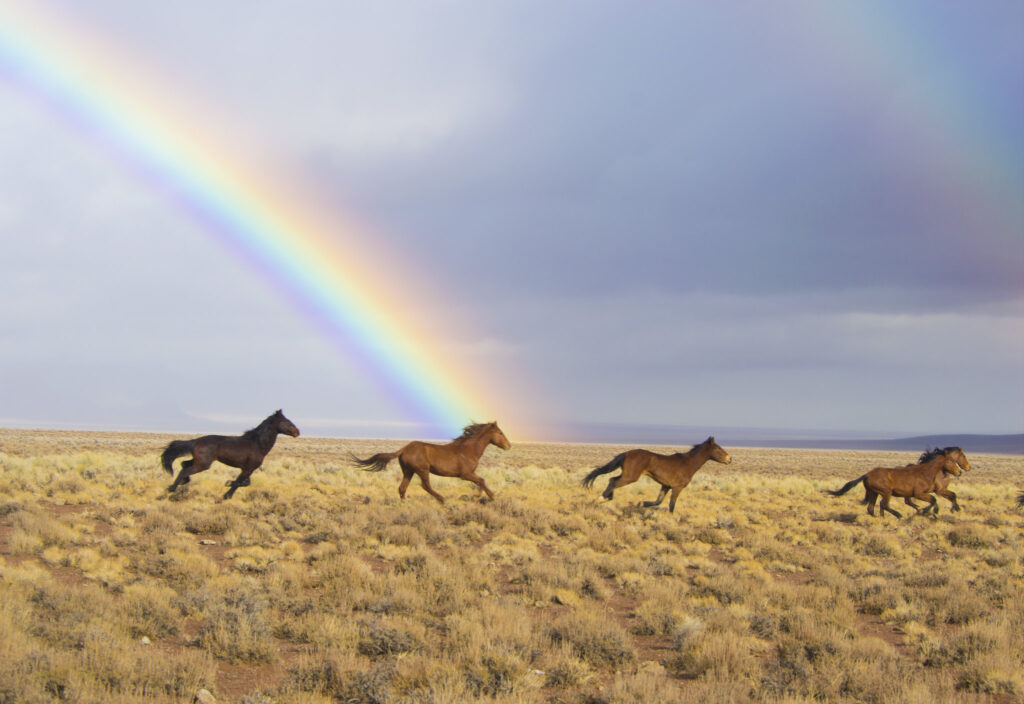This article was originally published in The Salt Lake Tribune.
The story of the wild American mustang is one of grit and hardship. Revered as a majestic icon of the West, behind the image is a cruel reality of competition, starvation, and degradation.
The Bureau of Land Management is tasked with managing a population of wild horses and burros that is growing exponentially. In a new report to Congress, the BLM concluded that its adoption incentive program—which pays people to adopt wild horses and burros—is a key part of achieving a sustainable program for the animals. Continuing incentive payments recently instituted under the program will promote adoptions in a way that benefits rangeland ecosystems and taxpayers.
With federal protections and no natural predators, the number of free-roaming animals has skyrocketed. The BLM sets an appropriate management level for wild horses based on the amount of rangeland available, a figure that currently stands at just under 2,000 animals in Utah. But the current population in the state is about three times that designated carrying capacity.
Across the West, wild horse and burro populations double every four years, and total numbers could surge to more than 2.8 million over the next two decades if nothing is done to reduce the annual growth rate.
In many areas, mustangs overgraze until there is no forage left, meaning they literally face the prospect of starving to death on public rangelands. The wild animals are depleting vegetation and water sources from Oregon to Arizona and displacing native species such as elk and sage grouse.
The BLM regularly gathers excess animals and moves them to off-range corrals and pastures, eventually offering them for adoption to good homes through auctions. Though this approach, which required a minimum bid of $125, had a degree of success, nearly 50,000 horses and burros remained in off-range facilities. According to the agency, the lifetime cost of caring for a single horse is approximately $48,000. The total annual cost to taxpayers for the holding facilities runs roughly $50 million and is expected to increase significantly as herd sizes grow.
To help adopt more horses and burros out of holding facilities and into private homes, the BLM started the Adoption Incentive Program earlier this year. It pays adopters a $500 first installment once they demonstrate that they’re providing quality homes. After a 12-month probationary period designed to ensure adopted animals are being treated well, owners receive title to their horse or burro and a second $500 payment.
Research by Property and Environment Research Center fellows Randy Rucker, Tim Fitzgerald and Vanessa Elizondo has found that a $100 payment from the BLM to adopters would likely have ensured most wild horses in long-term holding facilities over the past several decades would have been adopted—a potential savings to taxpayers of $450 million. Even a program that pays $1,000 to find a mustang a good home is orders of magnitude cheaper—and likely much more humane—than caring for it in a government holding facility for the rest of its life. And finding a good home is clearly a better outcome for a wild horse than starving on the range.
In its first six months, the Adoption Incentive Program was a key reason that adoptions increased by more than 60 percent. The BLM expects that with the program and related market-based approaches it can place up to 7,000 animals in private homes each year over the next decade, tripling the average number of annual adoptions since 2012.
Wild horse and burro management is an issue fraught with emotion and complicated by biological and political concerns. While adoption in and of itself cannot solve the overpopulation challenge, continuing incentive payments will benefit wild horses, public rangelands, and taxpayers—a first step toward reining in the problem.




